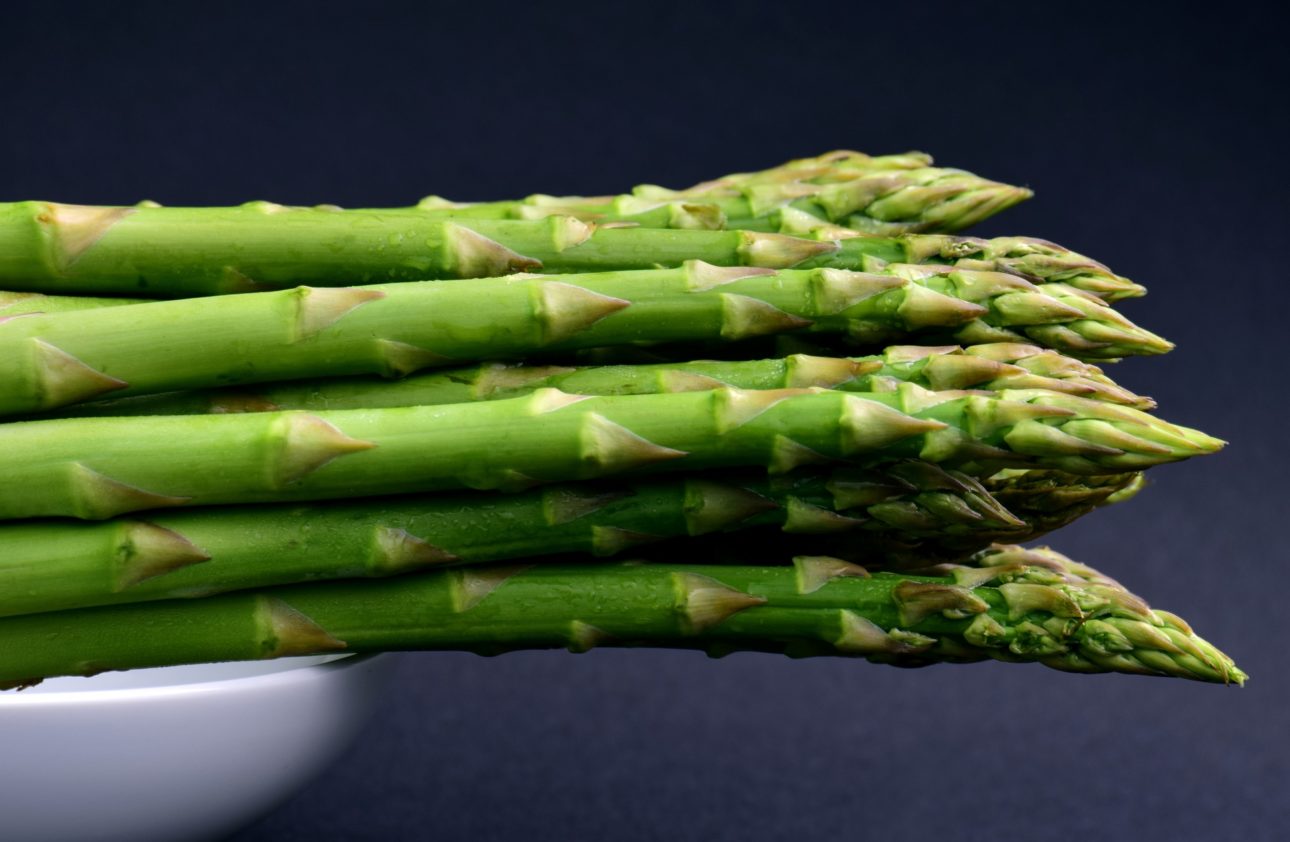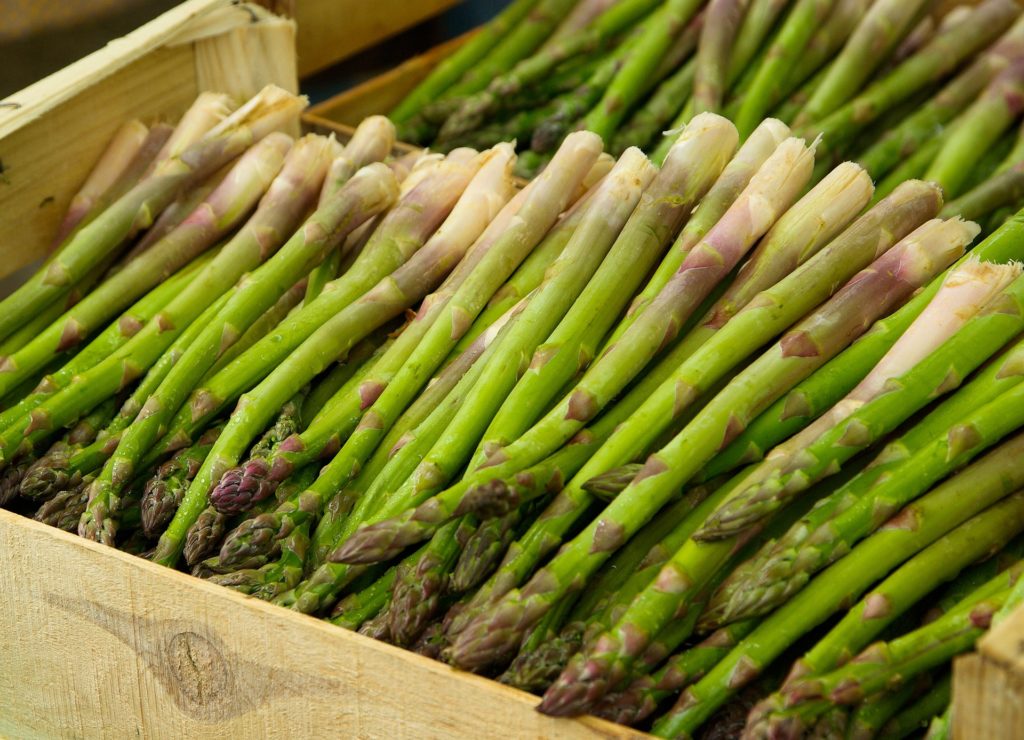Growing Asparagus in Michigan
If you love asparagus and want to grow some yourself, waste no time in getting started. Even with the best of care, an asparagus bed won’t hit its stride for several years. But once that happens, the bed will produce an abundant crop of spears spring after spring for at least the next 15 to 20 years.
Fresh from the garden, asparagus is the very essence of spring. The sweet, slender spears can be steamed, sautéed, roasted, grilled, in sauce or microwaved, alone or with other veggies in soups, stir-fries and salads. It is also easy to store your bounty of asparagus in the freezer by just blanching it in boiling water, then chill in ice water before you pop it in the freezer.
While it takes some time to get a crop started, asparagus is not difficult to grow. Be sure to choose your variety and site wisely and you’re on your way to decades of good eating.
1. Prepare your Site
Prepare the site well since it will live there for a long time. Full sun with rich, well-drained soil. Add plenty of compost to the site to improve drainage. If no compost available, then add grass clippings or shredded leaves. Planting in raised beds can help improve drainage. PH should be in the neutral range of 6.5 to 7.5. If PH is too low, then limestone can be added to neutralize the acidity.
It is extremely important to reduce as many weeds as possible from the site to reduce your weed problem once the asparagus are planted – even if this requires a full year of advance preparation. Asparagus plants will not tolerate weed competition. You will want to be vigilant in removing weeds as you see them pop up.
A thin layer of bark mulch around the plants as well as cultivating between the rows should help keep weeds at bay.
2. Choose your Asparagus Varieties Carefully
Asparagus crowns grow as two different sexes, and their ability to pollinate can greatly reduce their productiveness. All-male cultivars are greatly preferred since they don’t self-pollinate or divert that energy away from producing new stalks. If your asparagus fronds produce bright red berries at the end of their season, you know you have an heirloom variety with females, and that may result in a somewhat lower production of asparagus.
We carry two different varieties (Spring 2019):
Jersey Knight: Jersey Knight is one of the all-male hybrids in the Jersey series from Rutgers University. It is a popular choice and does well in a wide variety of soils (including clay) and tolerates warmer climates. All-male hybrids are likely to produce 2-3 times more than heirloom varieties on average. It is highly resistant to asparagus diseases such as crown rot, rust and fusarium wilt.
Mary Washington: Mary Washington is a traditional variety that produces long, deep green spears with pale purple tips. It is appreciated for its uniform size and delicious flavor and has been a favorite of American gardeners for more than a century.
Note: Keep in mind that asparagus crowns are only available at our retail store in early spring. Once they are gone, we will not stock any again until the following spring.
3. Plant your Asparagus Crowns
Early spring (April) is the best time to plant asparagus in Michigan. Asparagus crowns should be planted in shallow trenches after the days have warmed to about 50 degrees.The planting depth depends on the soil type. Asparagus crowns should be planted six inches deep in sandy soils and five inches deep in clay soils. A small amount of well-rotted barnyard manure can be worked into the soil at the bottom of the trench before planting. Space crowns 12 to 18 inches apart in rows that are 4 to 5 feet apart. Spread the roots out in the trench with the buds pointing upward. Cover the roots with garden soil right up to the crown and water well. As shoots begin to appear, add more soil until the trench has been filled back up, level with the soil surface. Mulch with shredded leaves or straw to keep weeds at bay.
For the first couple years, weed often and carefully — asparagus roots are near the surface and can be damaged by weeding tools. Don’t interplant other vegetables in the same bed. Asparagus hates competition of any kind.
Watering is very important especially in the first three to five years of growth. You may wish to install drip irrigation or put out a soaker hose during any dry spells.
4. Harvesting:
Asparagus plants should be allowed to become well established before any spears are harvested. No spears should be harvested during the first growing season. Asparagus can be harvested over a three to four week period during its second growing season but you should stop picking when spears grow spindly. In following years, asparagus plantings can be harvested until early to mid-June. Harvest asparagus by cutting or snapping the spears when they reach a height of 6 to 8 inches; a knife is not necessary and can actually spread disease from one plant to another.By the crop’s third season, you should be able to pick a full harvest — that means you can pick all the spears that emerge over six to eight weeks.
Once the harvesting season has ended, which will be in late spring/early summer, allow the spears to develop naturally. They will grow 4′ to 6′ feet high, with lacy, light-green foliage. Keep the bed weeded, mulched and watered. The healthier the fronds, the more energy the plants will have for next year’s harvest. When fall arrives, the fronds will turn yellow. At this time, it’s generally best to cut the fronds about an inch above ground level and remove them from the area. This will help keep pests, such as the asparagus beetle, from overwintering. It will also make sure your bed is neat and ready to go next spring.



